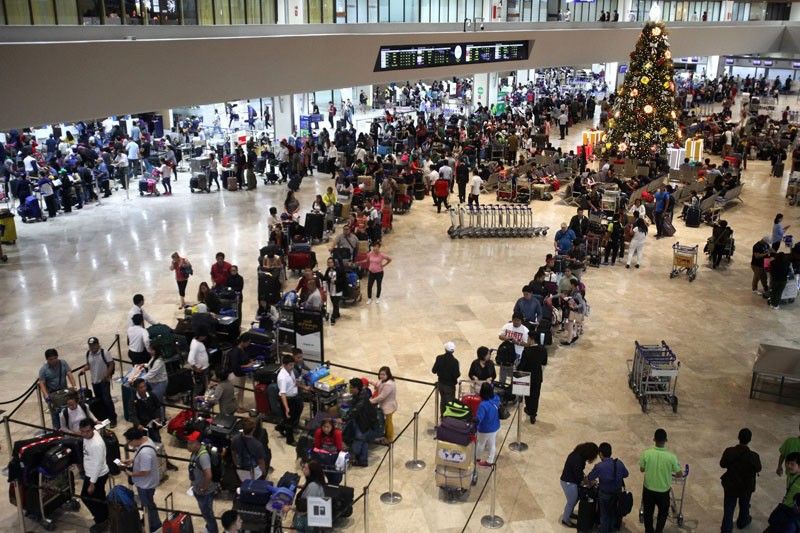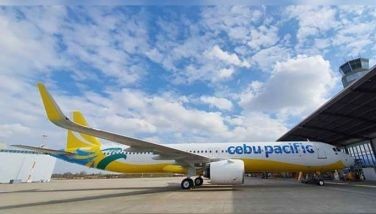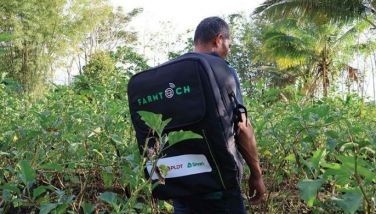Megawide-GMR offers $3-B NAIA rehab plan

MANILA, Philippines — Megawide GMR submitted yesterday a $3-billion proposal to decongest and rehabilitate the Ninoy Aquino International Airport (NAIA), marking the latest development in what has now become a multi-airport showdown among the country’s biggest conglomerates.
The proposal will compete with the $6.7 billion or P350 billion offer submitted by seven of the country’s biggest conglomerates – LT Group Inc., MVP Group, Aboitiz Equity Ventures, Filinvest Land Inc., JG Summit, Ayala Corp. and Andrew Tan’s Alliance Global Group.
With Megawide’s submission, the Duterte administration will have to decide on the various proposals for a multi-airport development – the super consortium’s NAIA bid, the Tieng family-led consortium’s plan to build an airport off Sangley Point in Cavite, San Miguel Corp.’s Bulacan airport proposal and the redevelopment of Clark International Airport.
In joining the battle for NAIA, Megawide-GMR trumpeted its experience in operating the Mactan Cebu International Airport (MCIA) and turning it around from just an ordinary provincial gateway into a globally recognized and awarded airport.
“As an experienced private operator, we have a deep understanding of the problem experienced by NAIA and we would like to offer our take on the solution,” said Louie Ferrer, president of GMR-Megawide Cebu Airport Corp.
“Our team has transformed Delhi International Airport, previously one of the world’s worst airports, into one that is consistently named among the top five best airports of the world. We have also transformed Mactan-Cebu International Airport, one of the Philippines’ previously overlooked airports, into the 2016 Best Regional Airport in Asia Pacific. We hope to contribute our knowledge from these projects to the development of our country’s main gateway,” Ferrer said.
Megawide- GMR’s proposal centers on decongesting NAIA and maximizing its potential in order to sustainably support the air traffic needs of the greater capital region.
“A solution is urgently needed, which we in the private sector are willing to support and provide,” Ferrer said.
NAIA, which traces its history to as early as 1948, was built to handle 30 million passengers but is currently handling nearly 40 million passengers.
The consortium is proposing an 18-year concession agreement, covering all airside, terminal, and landside improvements. This is shorter than the 35-year concession proposed by the super consortium.
The work program is divided into three main phases. Phase 1, which will be completed in one to two years, will improve NAIA airside capacity and improve the terminals, phase 1B will cover three to four years and phase 1C will build future capacity.
Megawide GMR will initiate capacity enhancement of the airside infrastructure, which includes but is not limited to the construction of full-length parallel taxiways for both runways, construction of additional Rapid-Exit Taxiways for the primary runway; extension of the secondary runway and provision of the maximum number of aircraft stands.
“Megawide GMR believes these solutions will increase airfield capacity to 950 to 1000 aircraft movements per day, a 30 to 35 percent increase from the current approximate of 730 aircraft movements per day. For peak hours, the consortium will increase NAIA’s peak hour aircraft handling capacity by 50 percent, from 40 to 60,” Ferrer said.
Within 24 months of taking over operations, the consortium will also rehabilitate and expand the existing terminals, which will roughly double the space and result in over 700,000 sq. m. of terminal area.
Andrew Harrison, an authorized consortium representative, said the detailed masterplan takes into account all possible constraints in transforming a fully operational brownfield airport.
On building a third runway, the consortium said operational challenges associated with having an additional runway make this solution unviable.
“A dependent runway would only add marginal capacity increase. In order to deliver real value, any runway consideration would have to be for an independent runway. This is in order for the additional runway to deliver the full capacity of a stand-alone runway. Given the land constraints surrounding NAIA, any additional runway would have to be built on reclaimed land in the Manila Bay,” the consortium said.
Ferrer said the 18-year concession period is unprecedented in airport PPP projects of this size across the world.
Under its proposal, Megawide-GMR seeks to pay the government annual concession fees, which entails a revenue share with a guaranteed minimum revenue component. There will also be no subsidy, equity or guarantee from the government or any concerned entity such as the Department of Transportation.
The consortium has tapped Mitre Corp., an American authority on research and development, whose work supports the American Federal Aviation Administration as technical partner.
- Latest
- Trending





























